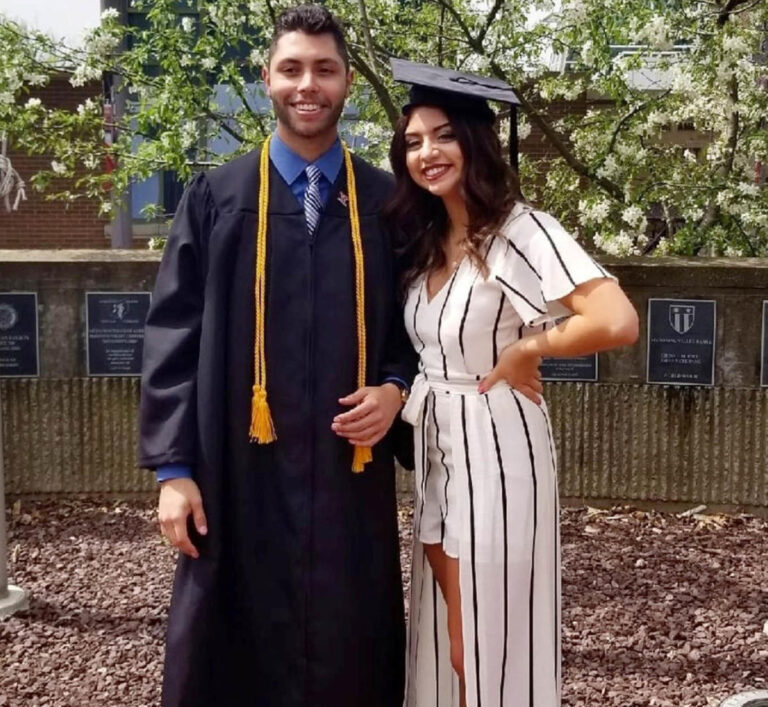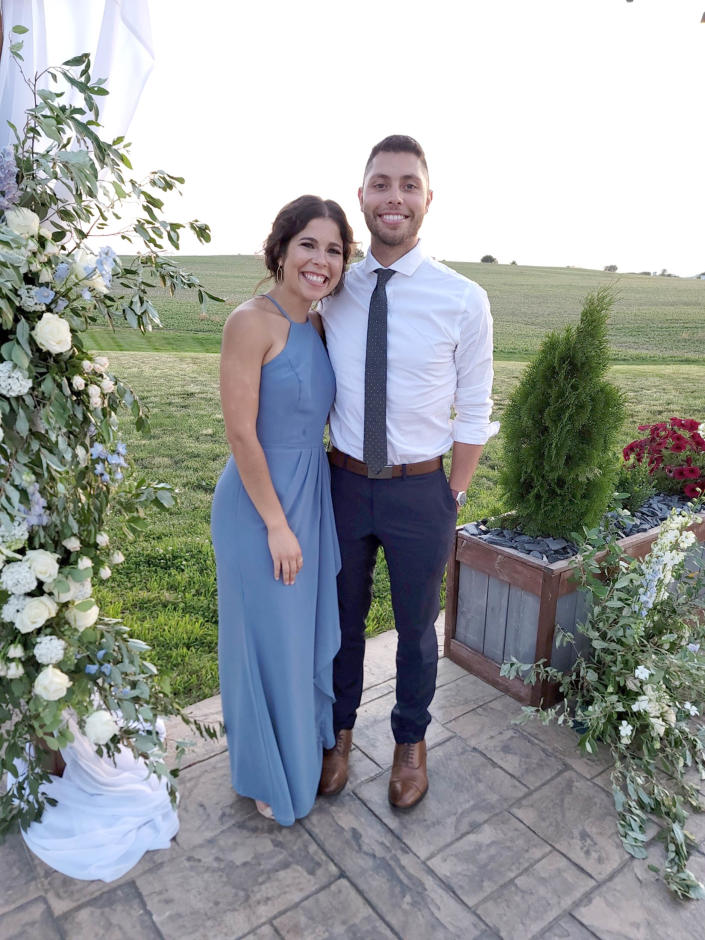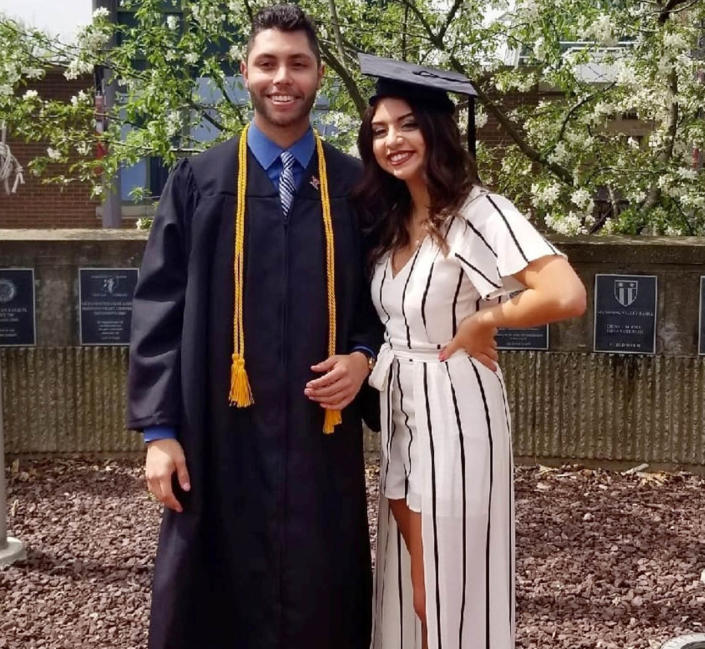
[ad_1]
On the Tuesday after Memorial Day 2023, Stephen Vidman, 28, had just returned to work when he felt lightheaded. He thought it might be a side effect of a medication he was taking. But when he tried speaking, he struggled to get words out.
“(I) ultimately tried to walk it off, and I fell over,” Vidman, a neuroscience graduate student at the Ohio State University, tells TODAY.com. “I couldn’t speak.”

One of his professors, Dr. Em Harrington, who was working nearby, quickly assessed Vidman and knew exactly what happened.
“I remember them vividly telling me, ‘You are having a stroke,’” he recalls.
From normal workday to ER trip
Vidman had arrived to work and was chatting with his mom on the phone when he began feeling lightheaded. When he couldn’t respond to her with more than mumbles, he suspected he was having a stroke.
“It was a strange thing,” he says. “I was really hoping it was just something weird, and it wasn’t a stroke.”
Harrington was working in their office when another student alerted them to Vidman’s troubles. Harrington, a practicing neurologist who uses they/them pronouns, quickly began evaluating Vidman’s condition.
“He was sitting on a chair and didn’t look like he was totally with it,” Harrington, an assistant clinical professor in the department of neurology at the Ohio State University Wexner Medical Center, tells TODAY.com. “Initially, I was thinking maybe he had like a syncopal event,” such as a sudden drop in blood pressure.
Harrington started asking Vidman questions.
“He was pretty severely affected,” Harrington says. “He was unable to answer questions, just had slurred speech, incomprehensible mumbling. … He looked around, acting like he was trying to say something — but wasn’t able to.”
Harrington conducted a quick stroke assessment, asking Vidman how many fingers they were holding up. Vidman couldn’t answer.
“I looked at his face,” Harrington says. “I had him raise his face and his eyebrows. It was full facial weakness.”
A student called 911, but as Harrington thought about how long it might take the ambulance to arrive, they came up with another plan. Their office was directly across from an emergency department in a hospital with stroke care.
“I knew he was having a huge stroke base on his presentation,” Harrington says. “Time, for him, was super critical, and I didn’t want to wait.”

Vidman was seated on an office chair with wheels, and his colleagues put a second one under his legs. Two professors pushed him to the emergency room. Harrington called ahead — their partner is the director of nursing — so staff knew to expect a young patient experiencing a stroke. A gurney awaited them outside the emergency room, and as soon as Vidman settled in, he got an IV to administer clot-busting medication. While Vidman couldn’t speak, he remained aware.
“I have a vivid memory of the whole experience,” he says. “I (began) feeling more tired as the symptoms progressed. I remember distinctly being like, ‘Do not fall asleep,’ because I didn’t know if I was going to wake up, and that was a little concerning.”
Doctors also performed a thrombectomy, a procedure to remove the clot blocking the blood vessel, which caused the stroke. Vidman recalls that, too.
“It was pretty large,” Vidman says. My first thought was, ‘Wow, that’s cool.’ And I realized, ‘Oh, that’s what was causing all this.’”
Vidman says doctors suspect that he experienced stroke because he was in an accident where his aorta ruptured through a decade earlier. At the time, he was 18 and working for the Ohio Department of Transportation. A distracted driver of a flatbed tow truck hit him while driving 45 miles per hour, and Vidman launched into the air.
“My life really flashed before my eyes,” he says. “I remember landing, and I actually stood up after I got hit, which blows my mind.”
The ligaments in his knee were “blown out,” he recalls, and he had a compound fracture in his upper arm, with bone poking out of his skin. The trauma to his aorta, called a transection, could’ve turned fatal.
“A damaged aorta is oftentimes how people die in car accidents,” Vidman says. “I asked the EMTs to tell it to me straight, ‘Am I going to make it to the hospital, and am I going to make it out of the hospital?’ And I remember one of the guys said, ‘We don’t know.’”
Doctors successfully repaired the transected aorta with a bovine tissue graft to reconnect the pieces together. Since then, he has been taking a beta blocker to lessen the pressure on his aorta. Doctors suspect the weakened area where his aorta was repaired allowed a clot to slowly grow over the years, and it “broke off arbitrarily,” causing the stroke Vidman says.
“We don’t know exactly how or why but that’s the leading assumption,” he adds. “I’m not likely to have another stroke as long as I keep my cholesterol low and keep healthy. It seemed like it was just a one-off.”
Stroke
The American Stroke Association wants people to consider the acronym FAST when thinking of stroke. It stands for:
-
F: Facial drooping or numbness
-
A: Arm Weakness or lack of sensation
-
S: Slurred or impaired speech
-
T: Time to call 911 immediately
“With strokes, the faster the treatment, the better the outcome,” Harrington says. “Every minute really counts, and you have to get someone (to the hospital) quickly.”
Clot-busting medications work best soon after a stroke, so it’s also helpful if friends and family can tell hospital staff when they noticed the onset of symptoms. Experts urge people to seek help if they notice a sudden cognitive change in a loved one.
“Anything out of the ordinary that’s sudden and not getting better, particularly if it involves the face or the limbs, is a warning sign,” Harrington says.
Harrington notes that the quick treatment Vidman received likely contributed to his positive outcome.
“Personally, I’ve never seen anyone recover that well,” Harrington says. “It was just remarkable and also very lucky because a lot of people, even if you do get them to the hospital somewhat quickly, do have residual deficits.”
From the ICU to presenting to colleagues
After spending three days in the surgical intensive care unit and then moving to a step-down unit for one day, Vidman went home. He took a week off and returned to work, giving a presentation only two weeks after his stroke. Still, he’s noticed lingering symptoms.
“I couldn’t walk down the hall without becoming just absolutely exhausted. It’s a different kind of tired,” he says. “I’ve noticed improvements every single day.”
He works about 30 hours a week. Even though he feels better, he struggles with expressive aphasia, which impacts his ability to speak naturally with ease.
“I can’t get words out sometimes, but I know what I want to say,” Vidman says. “It’s frustrating.”

The stroke occurred in the insular cortex in his brain, which impacts his feelings, and he noticed he’s frustrated easily, for example.
“I’ve had a bit of emotional dysregulation,” he says. “It’s helped me become more aware of my emotions, and to be honest, it’s helped me gain better control over that.”
He wanted to share his story to offer hope to others who experienced stroke and to raise awareness of the importance of medical research.
“I want to inspire people to study science. This is cool. We can figure this stuff out,” he says. “We’re close to figuring out how to recover from injuries like this because, when these injuries happen, you can’t recover from them right now, and that (is) scary. But we’re getting there.”
This article was originally published on TODAY.com
[ad_2]